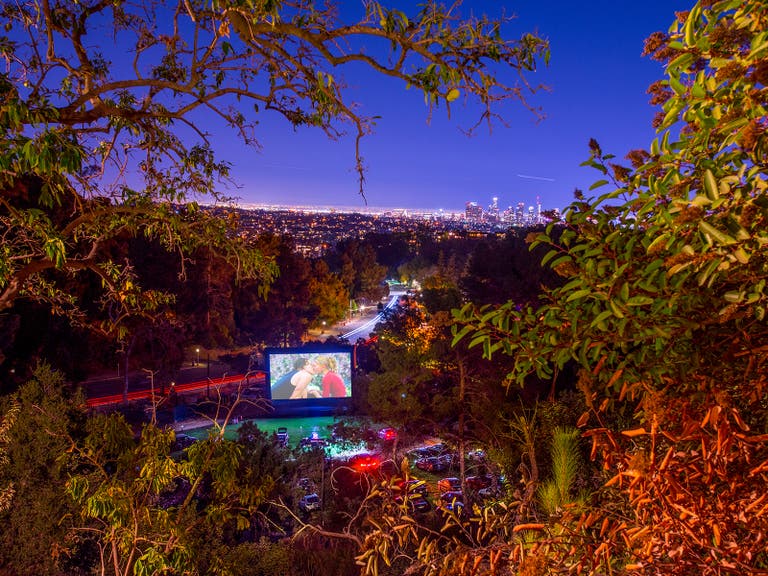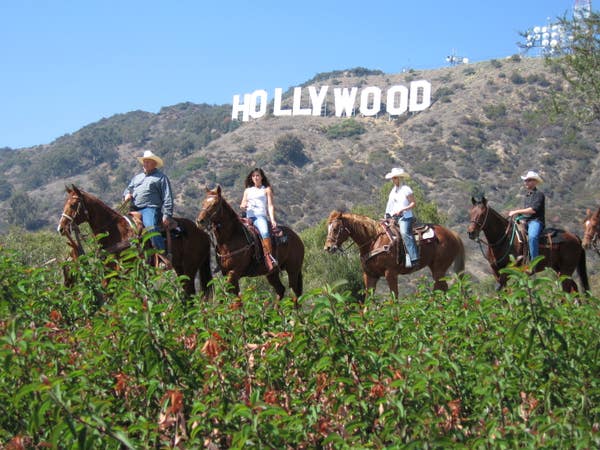There's Magic Everywhere You Look in Los Angeles
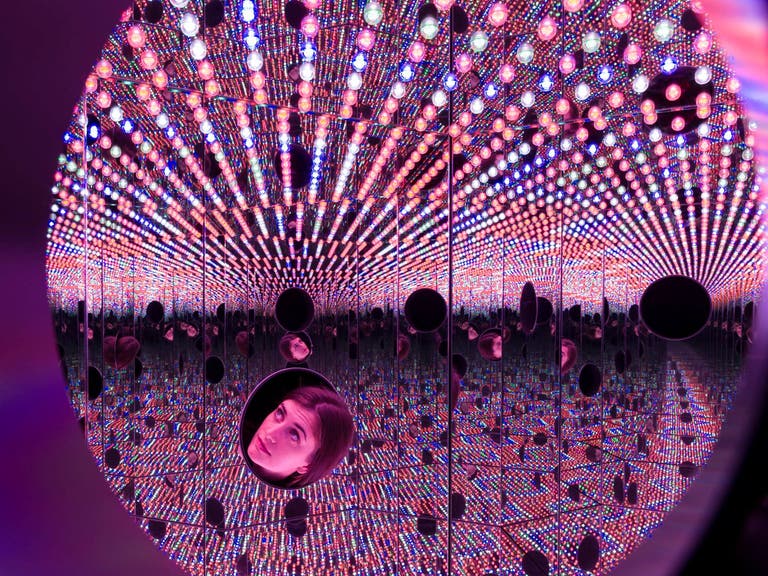
Yayoi Kusama, "Longing for Eternity," 2017 [detail]. Photo: Maris Hutchinson/EPW Studio. Image © Yayoi Kusama. Courtesy David Zwirner, New York; Ota Fine Arts, Tokyo/Singapore/Shanghai; Victoria Miro, London/Venice; Yayoi Kusama Inc.
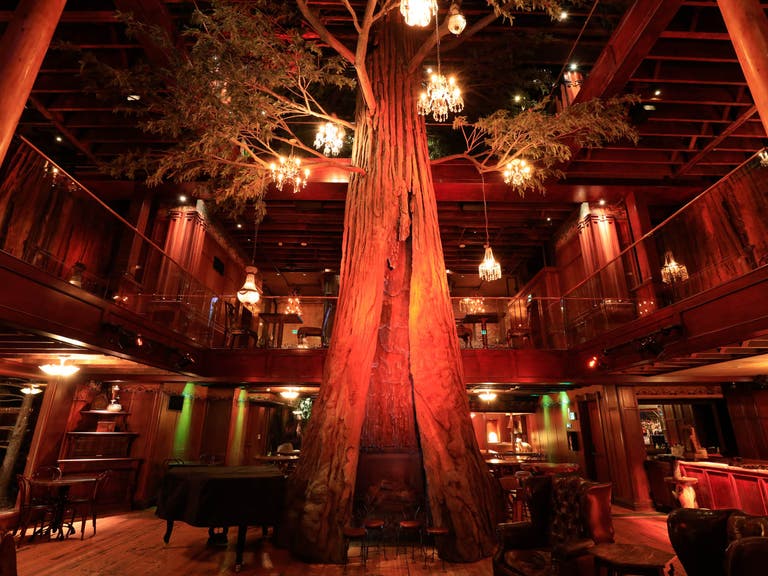
Redwood Tree, Clifton's Republic
| Photo: Yuri Hasegawa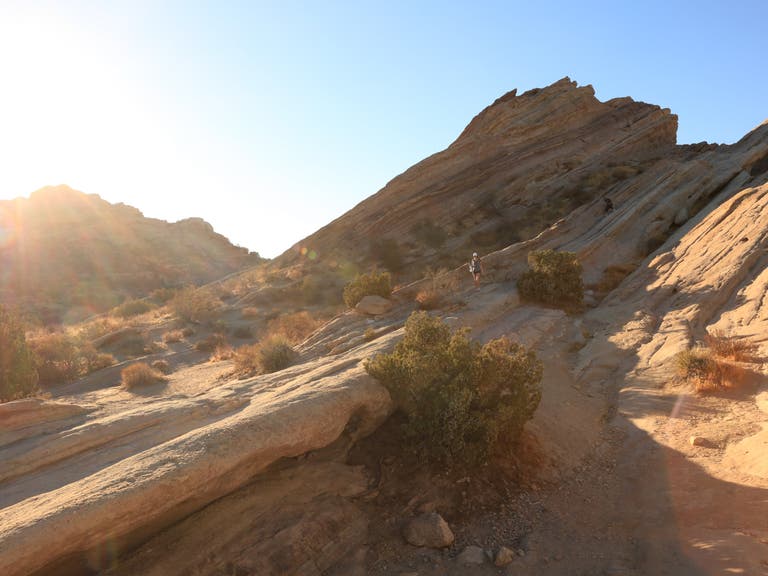
Vasquez Rocks Natural Area
| Photo: Yuri HasegawaFor generations, Los Angeles has been a city of dreamers. More creatives live in L.A. than any city in history - they are the artists that inspire us, that make fantasy into reality, and will shape the skyline of this global metropolis into the next century. From stunning architecture and world-class art, to spectacular landscapes and hidden gems, read on and discover the most magical places in Los Angeles.
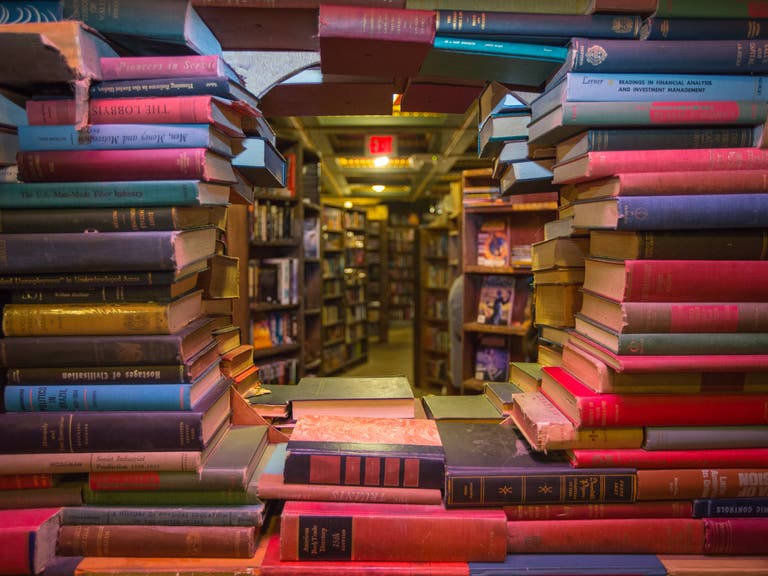
The Last Bookstore
The Last Bookstore sells more than 250,000 new and used books and magazines. In addition to its vast selection of titles across all genres, the store itself is a must-see for its interior design alone. Not only are there books for sale, but printed material is adapted to create a unique environment where novels, anthologies, manuals and storybooks actually become a part of the store's own layout, too. Don’t miss the mezzanine level, which includes the Labyrinth Above The Last Bookstore (the back room sells 100,000 books for $1 each!), Gather Yarn Shop and the Spring Arts Collective gallery shops.
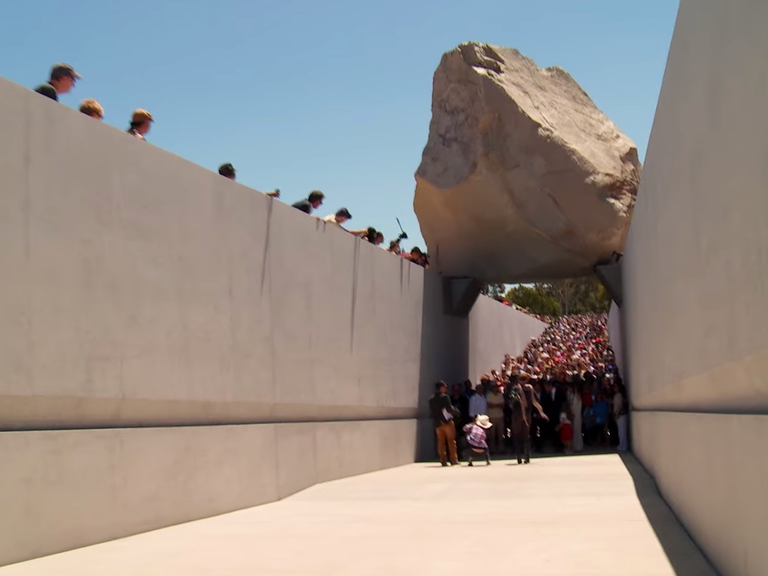
"Levitated Mass" & "Urban Light" - LACMA
Two of L.A.'s most iconic public artworks are located at the Los Angeles County Museum of Art (LACMA): Levitated Mass and Urban Light.
Levitated Mass, a 2012 large-scale sculpture by Michael Heizer, is located on the north side of the LACMA campus. The installation features a 340-ton granite megalith that’s balanced over a 456-foot-long concrete trench. Visitors have found numerous ways to Instagram the massive boulder, from underneath to creative poses both near and far away
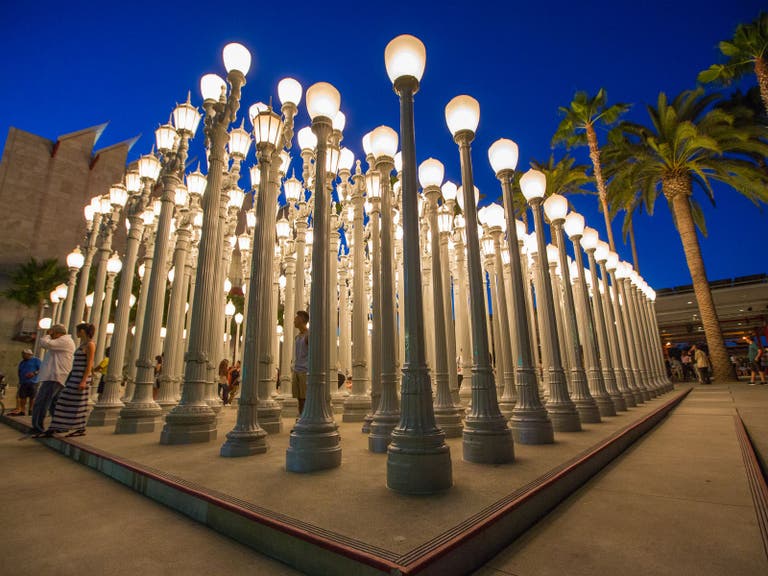
Located on Wilshire Boulevard in front of the museum’s BP Pavilion, Urban Light is a large-scale assemblage sculpture by Chris Burden. The striking installation consists of 202 restored street lamps from the 1920s and 1930s - many of which lit the streets of Southern California. Celebrating its 10th anniversary in February 2018, Urban Light has become one of the most photographed cultural attractions in L.A., beckoning visitors with its ethereal glow well into the night.
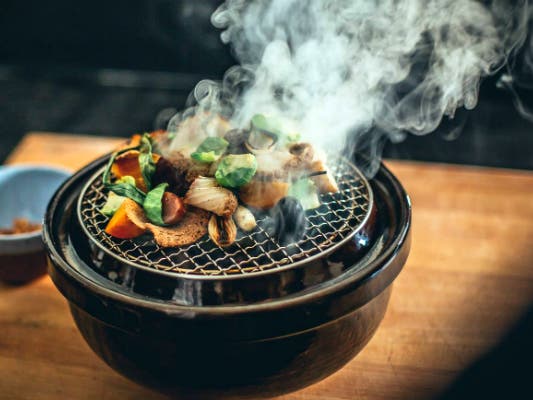
Otium
Situated in an urban plaza beyond a small grove of olive trees adjacent to The Broad, Otium was praised by the late Los Angeles Times food critic Jonathan Gold as “L.A.’s most ambitious restaurant in years.” The striking indoor-outdoor space features a triple-height atrium, open kitchen and a mezzanine garden. Chef Timothy Hollingsworth, the former chef de cuisine at Thomas Keller’s celebrated French Laundry, interprets a wide range of global cuisines resulting in unforgettable meals.
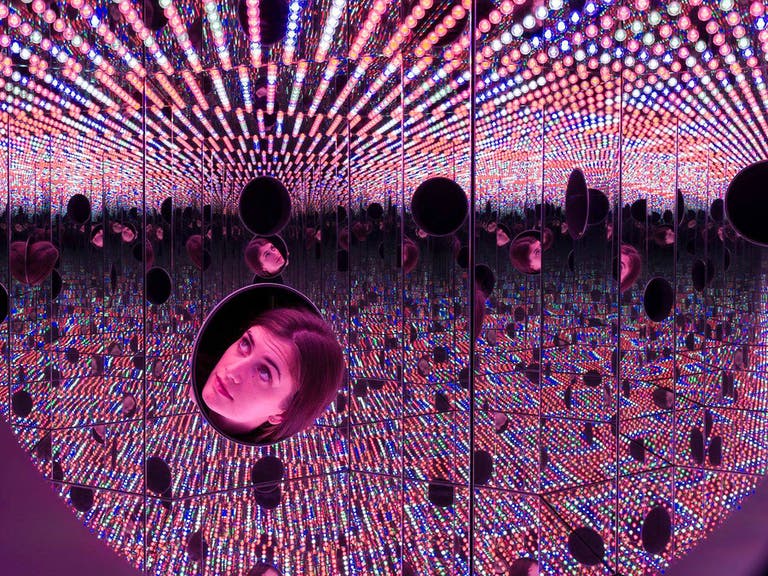
The Broad
Los Angeles has been called one of the most Instagrammed cities in the world, thanks in great part to futuristic buildings like The Broad on Grand Avenue. One of L.A.'s newer icons, the contemporary art museum features two of Yayoi Kusama's stunning Infinity Mirror Rooms - The Souls of Millions of Light Years Away and Longing For Eternity are sure to dazzle the mind.

Clifton's Republic
There's nothing in L.A. (or any city, for that matter) quite like Clifton's Republic, located in Downtown L.A.'s historic Broadway Theater District. You can sip a classic cocktail at the Monarch Bar, located in the shadow of a massive redwood tree; touch an actual five-billion-year-old meteorite at the Gothic Bar; or sail away to the Polynesian paradise of the Pacific Seas tiki bar.
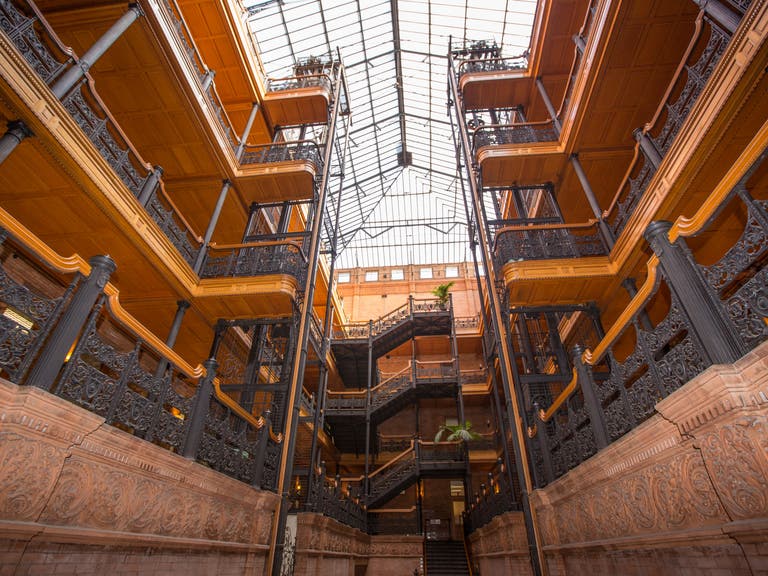
Bradbury Building
Located on Broadway across from the historic Grand Central Market, the stunning Bradbury Building has appeared in movies, TV, music videos, and is mentioned frequently in literature. Built in 1893, the building was featured prominently in the 1982 sci-fi classic Blade Runner. Film noir fans will recognize the Bradbury from films such as Chinatown (1974), D.O.A. (1950), and I, The Jury (1953). After admiring the intricately detailed architecture, be sure to take a selfie with the Charlie Chaplin statue that’s located near the lobby.
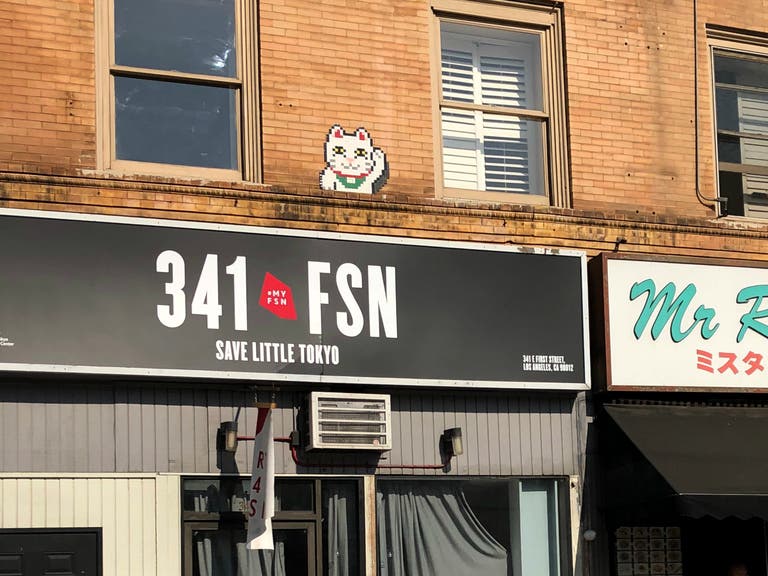
Invader Was Here
Invader began orchestrating his mosaic installations in his home city of Paris in 1998, experimenting with an unorthodox form of street art: tiles. His first piece in Los Angeles, LA_001 was placed in front of Pink’s Hot Dogs in 1999. Since then, he has “invaded” L.A. ten times and now has over 200 pieces hiding in plain sight. Discover the Pixel Power of Invader's street art.

Watts Towers
On an unassuming plot of land, spitting distance from the train tracks that run through the center of Watts, you'll find the Watts Towers, one of the most stunning and improbable works of public art anywhere in the United States. Seventeen sculptures rise like giant, inverted ice cream cones toward the sky. The openwork spires are embedded with shells, tiles, soda bottles, mirrors, shards of pottery and two grinding wheels. The Watts Towers are even more remarkable when you know they were the vision of Simon Rodia, an Italian immigrant who worked nearly every day for 34 years, with no outside help and only the most elemental of tools, to build a monument at once impenetrably personal and joyously communal.
NOTE: The Watts Towers are currently being renovated and partially hidden by scaffolding.
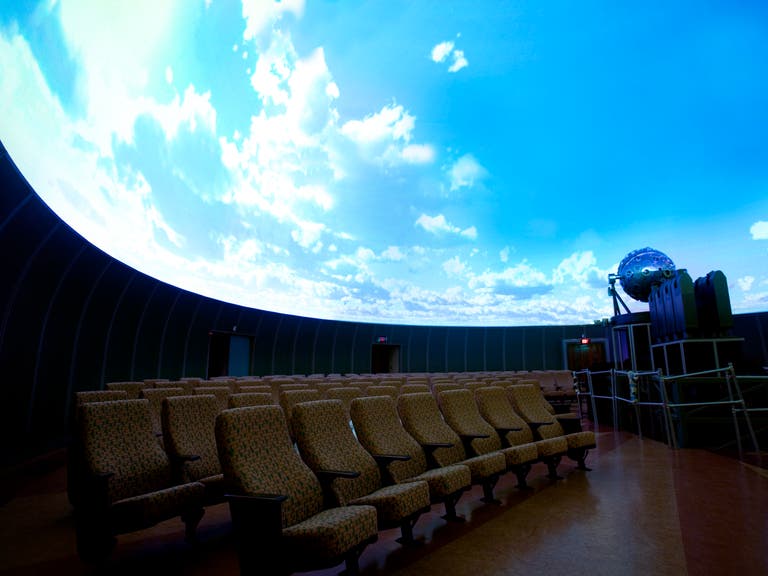
Griffith Observatory
Opened in May 1935, the Griffith Observatory is one of L.A.’s greatest cultural attractions, offering spectacular views from the Pacific Ocean to Downtown L.A. from its perch on Mt. Hollywood in Griffith Park. Today, the Griffith Observatory is renowned as a national leader in public astronomy, and a beloved gathering place for visitors and Angelenos alike. Whether you're going to a "star party" to watch a meteor shower, immersed in the awe-inspiring Samuel Oschin Planetarium, or imagining yourself in scenes from La La Land and Rebel Without a Cause, the Griffith Observatory is a must for your L.A. bucket list.
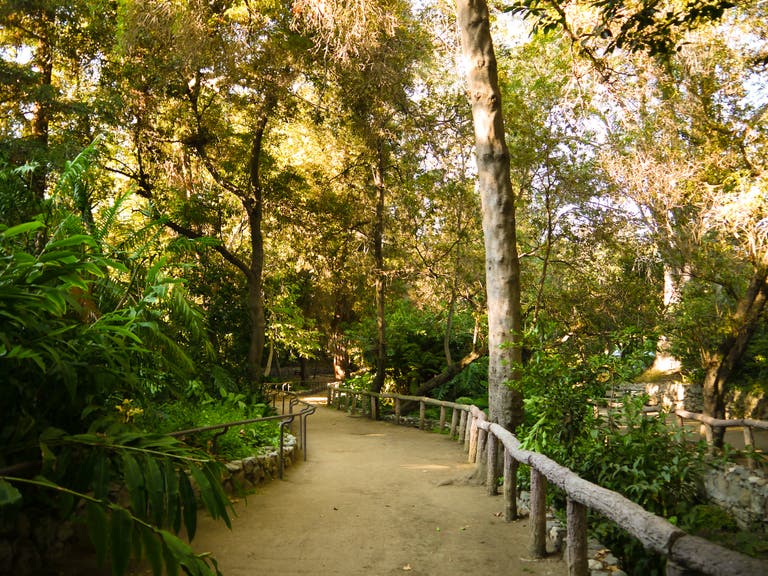
Ferndell Nature Museum - Griffith Park
Situated at the southwestern tip of Griffith Park, Ferndell Nature Museum is a 20-acre botanical oasis that features a quarter-mile meandering trail, 20-plus waterfalls and 17 footbridges, all canopied by more than 50 fern and tropical plant varieties. The shaded, breezy spot has long been a favorite haven for Angelenos, especially on warm summer days.
The idyllic glen should be recognizable to Trekkies as the gardens of a Bajoran monastery from two Deep Space Nine episodes – Season 1’s “In the Hands of the Prophets” and Season 2’s “The Circle.” Ferndell also popped up as a woodland simulation on the holodeck in the pilot episode of The Next Generation, “Encounter at Farpoint.”
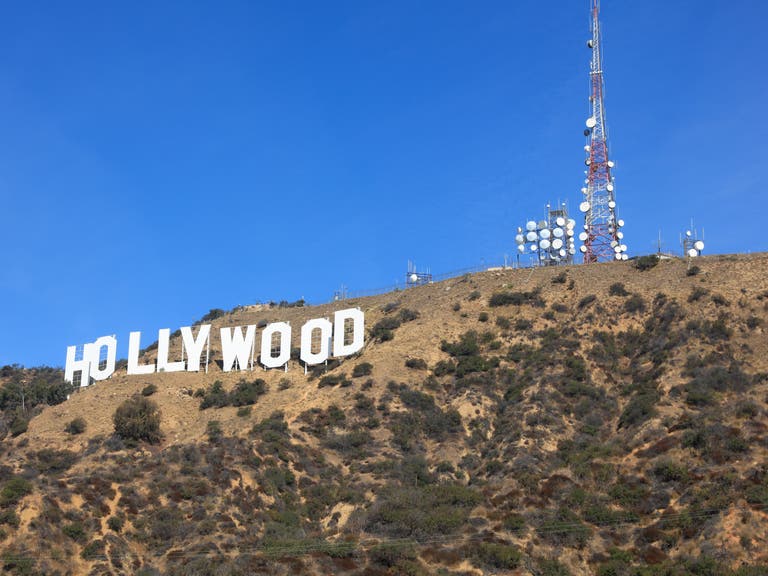
Hollywood Sign
The landmark Hollywood Sign is a cultural icon, a world-famous symbol of Los Angeles, and a pop culture star of film, TV and the occasional prank. Originally built in 1923, the 45-foot tall sign was restored in the 1970s, thanks to a campaign led by Hugh Hefner, and today looks better than ever thanks to a December 2012 makeover. There's something magical and reassuring about knowing that you can see the Hollywood Sign from locations across the city, on a breathtaking helicopter tour, and even behind it. Here's a local's guide to the best views of the Hollywood Sign.
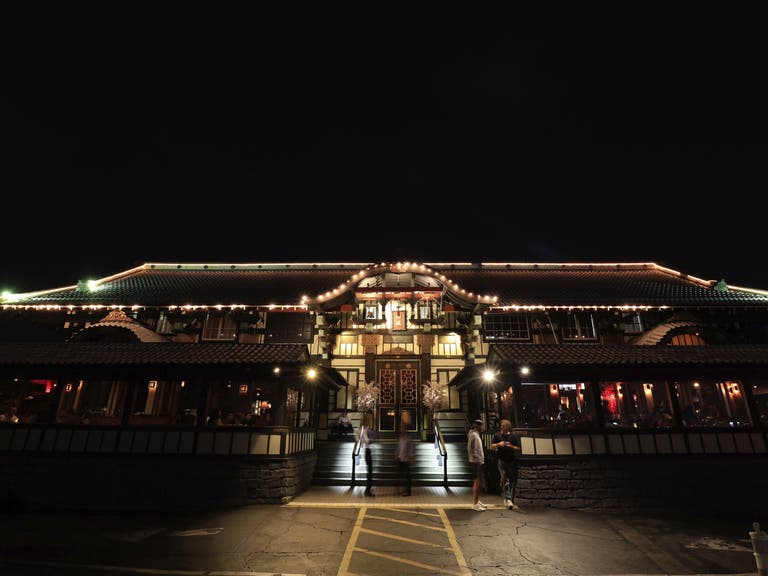
Yamashiro
Spectacular Los Angeles backdrop aside, the newly-restored Yamashiro is a Los Angeles mainstay and one of the most stunning environments in the city. The sushi focused restaurant was built in 1914 as a replica of a palace in the Yamashiro mountains, complete with a pagoda, koi ponds and gardens. Sunsets stretch above the L.A. metro area in an endless sky — hence a designated section called the “Sunset Room.” Transformative experiences await.
Add a side of cityscape or Pacific Ocean to go with your entree at these L.A. restaurants with a view.
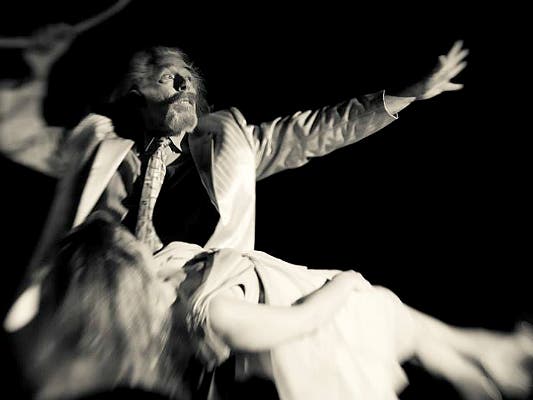
Magic Shows
Home of The Academy of Magical Arts for more than 50 years, the Magic Castle in Hollywood is widely considered (in a city that loves exclusivity) “one of the most difficult places to get into.” Membership is invite-only and entrance is granted only when accompanied by a dues-paying member. Over the last half-century, magicians from across the planet have been re-locating to Southern California in hopes of joining the Academy, which has played a major role in shaping L.A.’s now vast and thriving magical landscape. Here are some of the other best places to find live magic in Los Angeles.
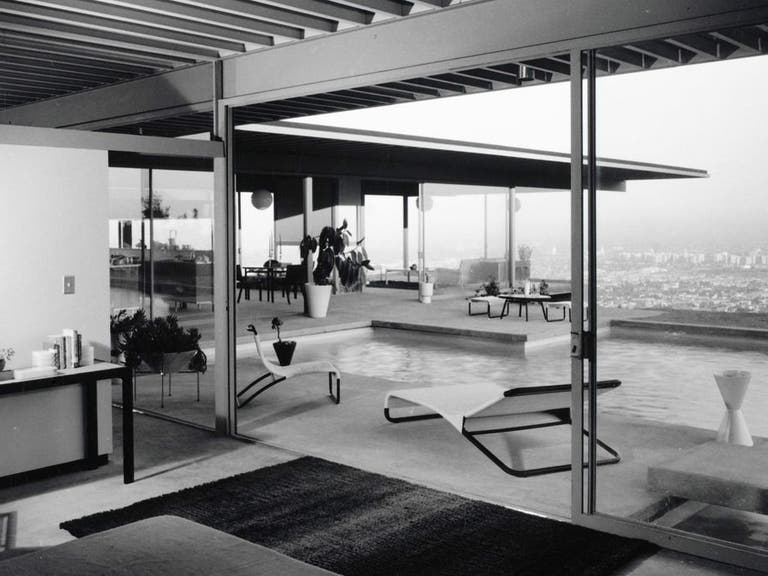
Stahl House
The Stahl House is instantly recognizable from the award-winning photograph by Julius Shulman, the image that would come to represent modern Californian architecture of the 20th Century, and was named one of the 100 Most Influential Images of All Time by TIME Magazine in 2016. Built in 1957 by architect Pierre Koenig at the behest of property owner, Buck Stahl, the home was later inducted into the landmark Case Study House program by Arts & Architecture magazine, as "Number 22.” The Stahl House was declared a Historic-Cultural landmark of the City of Los Angeles in 1999. In 2007, the American Institute of Architects listed the Stahl House as one of the top 150 structures on their “America’s Favorite Architecture” list, one of only 11 in Southern California. In 2013, the Stahl House was added to the National Register of Historic Places. A sunset tour of the house is a quintessential Los Angeles experience and not to be missed.
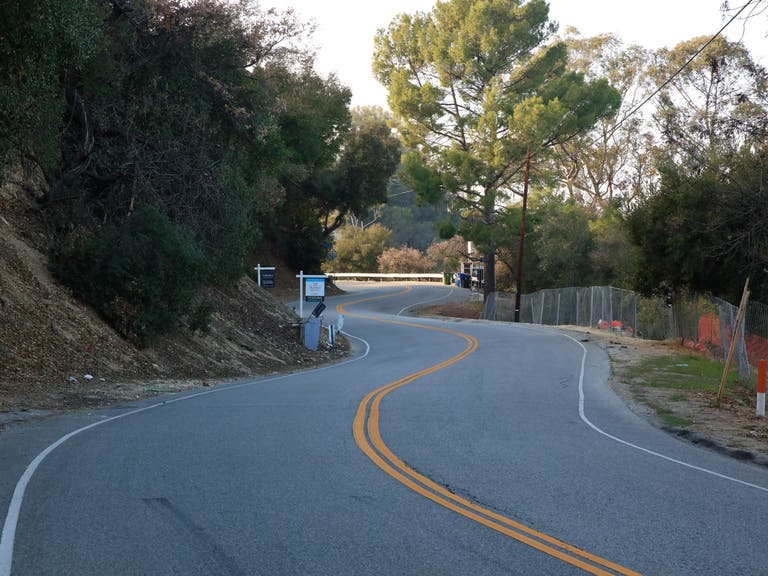
Mulholland Drive
One of L.A.'s greatest driving experiences is along the 21-mile Mulholland Drive, the famed road that spans the Hollywood Hills to Pacific Coast Highway. Along the route, the winding two-lane road offers spectacular views of Hollywood, Downtown L.A. and the San Fernando Valley. Day or night, parking at one of the numerous lookout points off Mulholland is a sure way to capture unforgettable images. From urban streets to natural landscapes, here are some of L.A.'s best scenic drives.
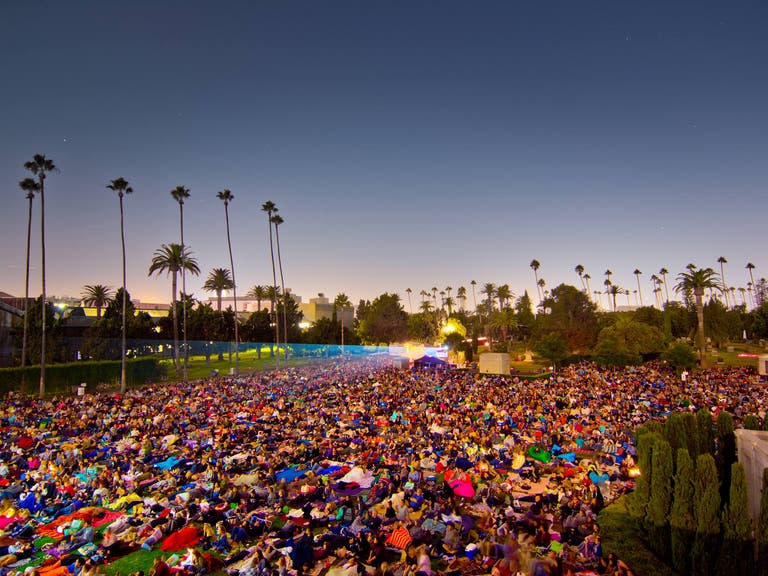
Hollywood Forever
Even your permanent resting place can be a status symbol — and no cemetery proves that better than Hollywood Forever. Celebs and semi-famous types are buried on its grounds, from legendary movie stars and publishing titans to rockers and even a couple of gangsters. The cemetery is also a social hub, hosting Cinespia, one of the city's most popular outdoor movie series, and its spectacular Dia de Los Muertos celebration that spans an entire weekend of events.
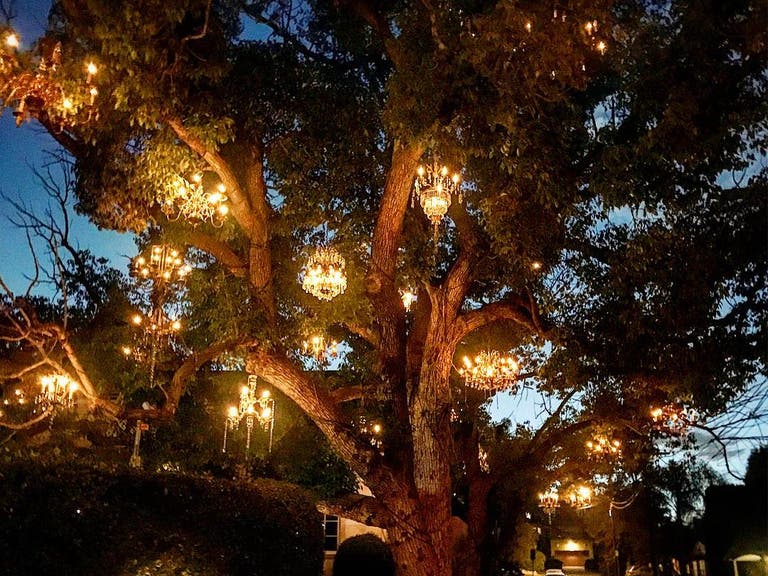
The Chandelier Tree
Sometimes it just takes one person to create something extraordinary that positively affects an entire neighborhood and beyond. The Chandelier Tree is the work of Adam Tenenbaum, who has attached more than 30 chandeliers to a century-old sycamore tree on his property as "a gift to the Silver Lake community." Located at the corner of W. Silver Lake Drive and Shadowlawn Avenue, The Chandelier Tree casts its warm glow every night - the romantic aura has worked its magic on at least one marriage proposal. A colorful meter in front of the tree accepts donations - after all, those chandeliers don't light up for free!
The Vault - Petersen Automotive Museum
The Petersen Automotive Museum is housed in a building that opened in 1962 as a department store designed by architect Welton Becket, who also designed the Capitol Records Building. Following a $125-million renovation, the Petersen reopened to the public in 2015. The striking exterior wraps the museum with ribbons of stainless steel that evoke motion, speed and the lines of a bespoke automobile. At night, the color and steel forms are lit from within by LEDs to accentuate the sculptural facade of the building.
For car buffs, The Vault at the Petersen is a bucket list experience - an extraordinary collection of 250 iconic and rare cars from around the world exhibited in a newly renovated 60,000 square-foot underground space. Two tour options are available: the 75-minute Introductory Tour and the 120-minute World Tour.
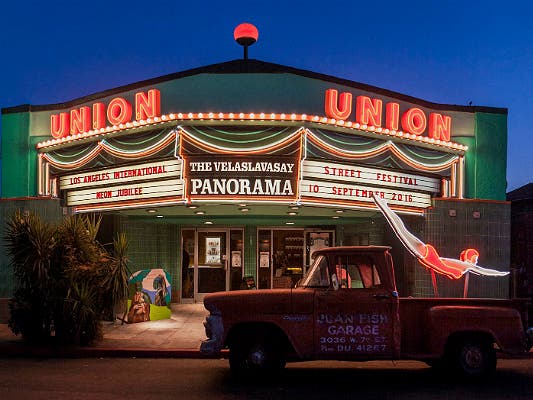
Velaslavasay Panorama
Located in the West Adams Historic District, the Velaslavasay Panorama is an exhibition hall, theatre and garden dedicated to the production and presentation of unusual visual experiences, especially those of the 360-degree variety. Traditionally, the panorama is an immersive 360-degree painted environment, often including a three-dimensional faux terrain in the foreground of the painting to enhance the illusion of depth and simulated reality. The Velaslavasay Panorama presents a spectacular art form that has been nearly lost due to technological advancements, and maintains its wonder. Truly, an “only in L.A.” marvel.
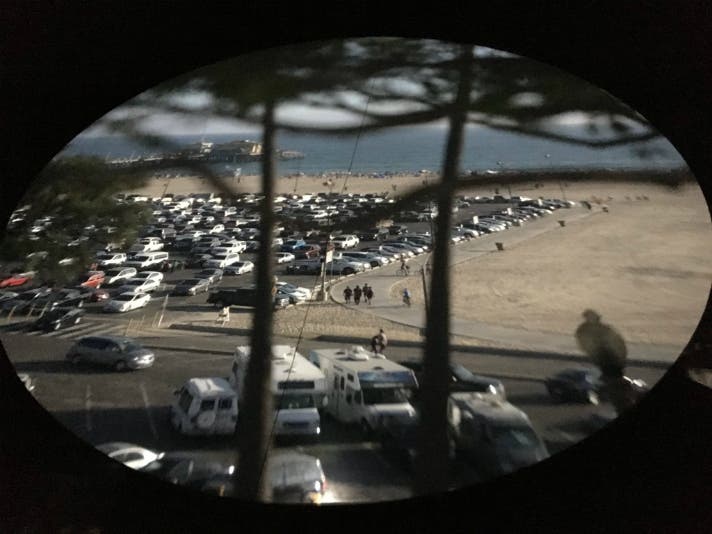
Camera Obscura
Located a few blocks from the Downtown Santa Monica station of the Metro Expo Line, the Camera Obscura is a unique experience that's been compared to an "analog webcam." Originally located on the beach, the Camera Obscura was built in 1898 by Robert F. Jones, nephew of Senator John P. Jones, co-founder of the town of Santa Monica. The Camera Obscura features a periscope and white screen in a darkened room. Mirrors reflect images from 360 degrees, guided by the visitor with an old-fashioned captain's wheel. The Camera is adjacent to the Art Lab, a mid-century arts and culture center that hosts classes and events. Admission to the Camera Obscura is free - check-in at the office with an ID to borrow the key.
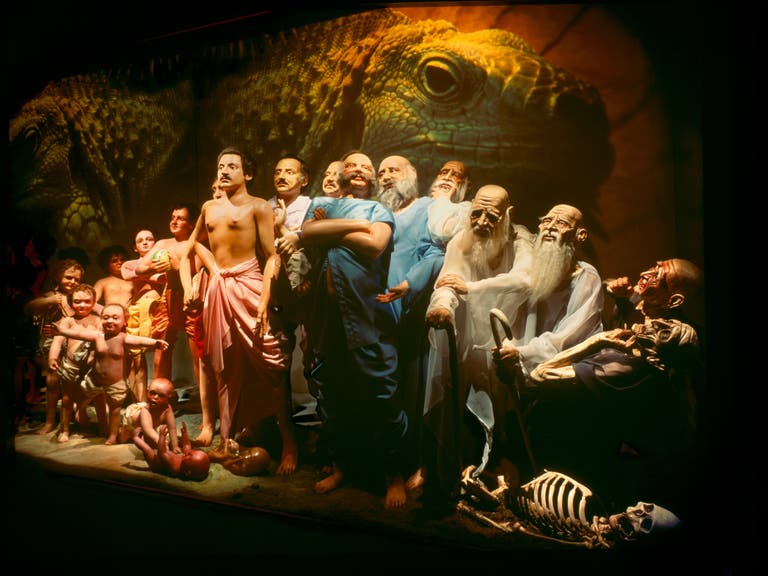
Bhagavad-gita Museum
The Art of Enlightenment is on curious display at the Bhagavad-gita Museum in Culver City. A group of Hare Krishna students traveled to India in 1973 to learn the ancient method of clay working. After careful study, the artists returned to the U.S. to apply their ancient craft knowledge along with more modern technologies to create 11 stunning dioramas. Opened to the public in 1977, the museum promises that those who pass through the doors of the museum rarely leave unchanged, perhaps because of the museum’s charming retro, lost-in-time quality. It’s a fascinating 45 minute visual lesson in transcendentalism that will leave visitors in awe.
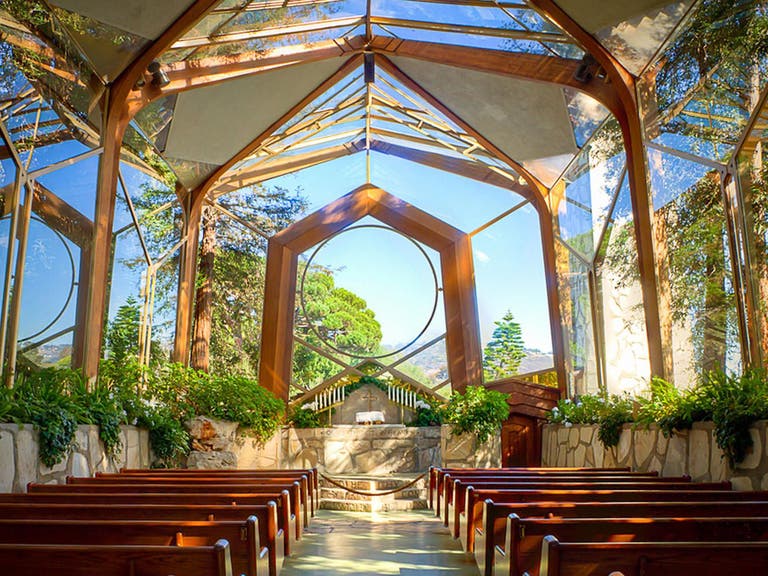
Wayfarers Chapel
The exquisite Wayfarers Chapel (aka “The Glass Church”) is located in Rancho Palos Verdes, situated on cliffs above the Pacific Ocean. Architect Lloyd Wright, son of the legendary architect Frank Lloyd Wright, conceived of Wayfarers Chapel as a “tree chapel,” a natural sanctuary set in the middle of a forest. Lloyd Wright’s design is regarded as one of the foremost examples of Organic Architecture, which promotes harmony between human habitation and the natural world. A popular wedding venue because of its spectacular design and location, the Wayfarers Chapel was featured prominently on The O.C. and appeared in other TV series like 90210.

Vasquez Rocks
Vasquez Rocks Natural Area Park is a 905-acre park located in Agua Dulce, about an hour north of Downtown LA. The park’s otherworldly rock formations reach heights of 150 feet and are the result of tens of millions of years of seismic activity and erosion. Vasquez Rocks is named for the outlaw Tiburcio Vásquez, who used the area as one of his many hideouts. A portion of the famed Pacific Crest Trail, which stretches 2,663 miles from Canada to the Mexico border, passes through Vasquez Rocks. The gentle incline and numerous trails provide plenty of options in exploring the park, especially when combined with views from atop the famous rocks. Note that there is very little shade throughout the park, so plan accordingly.
Star Trek fans will instantly recognize Vasquez Rocks from Captain Kirk’s battle with the Gorn in the Season 1 episode “Arena,” as well as several other episodes and from the film series. HBO's critically acclaimed Westworld has also filmed there. Vasquez Rocks appeared in dozens of classic TV shows, including Bonanza, The Rifleman, Kung Fu, Mission: Impossible and The Twilight Zone. Vasquez Rocks was also featured in movies such as Dracula (1931), Blazing Saddles (1974) and Little Miss Sunshine (2006). Because of its significance as a prehistoric site for the Shoshone and Tataviam peoples, Vasquez Rocks was added to the National Register of Historic Places in 1972. Walk in Oscar's footsteps when you explore the outdoor film locations of these Academy Award-winning movies.
